We visit a mysterious pagoda near Yomiuri Land, turns out to be an incredibly sacred spot
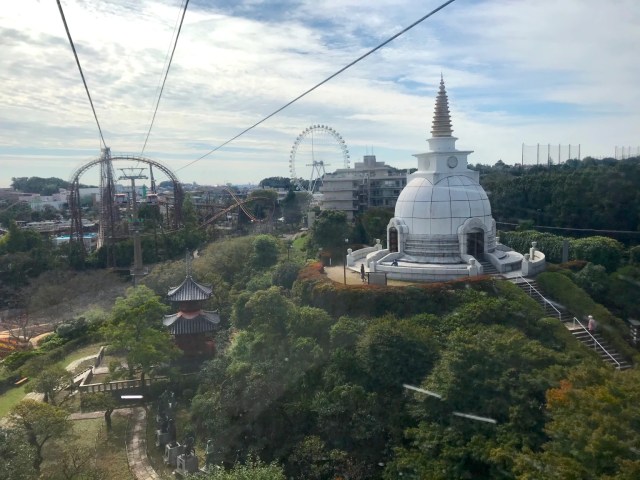
An enigmatic-looking building turns out to be much more.
Anyone who has ever been to the Tokyo amusement park Yomiuri Land might have spotted a white pagoda close by. If you’re making your way to Yomiuri Land from the train station, you might even mistake it for an attraction at the amusement park, but actually it’s a part of Hana Biyori, a flower park next to Yomiuri Land.
Actually, there are two pagodas in Hana Biyori, which opened in 2020 — a red one and a white one. Both pagodas have been there since Yomiuri Land opened back in 1964, but now are part of Hana Biyori, located in an area of the flower park called ‘the Sacred Forest’. Our reporter Mariko Ohanabatake decided to pay it a visit and and investigate further.
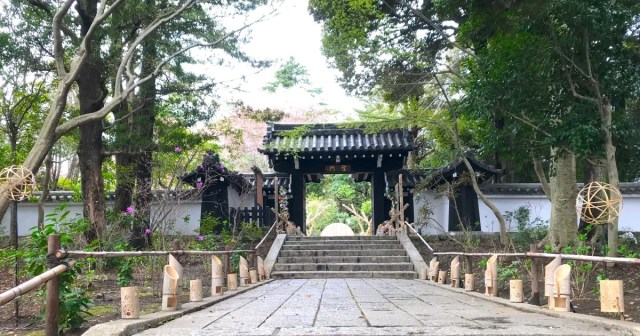
The Sacred Forest is certainly an unusual name for an area of a flower park, but Mariko soon found out that it was a fitting one. The white pagoda is made of Pakistani marble and called Shaka Nyorai-Den (or ‘Shaka Hall of the Buddha’). It is said that the hair (Śarīra) and bones (stupa) of the Buddha are enshrined within it. Śarīra is the term given to relics found in the cremated ashes of Buddhist spiritual masters, and stupa refers to a shrine containing the remains of a holy person. In other words, this pagoda was definitely a sacred place for those who practice Buddhism.
The stupa was enshrined in the former Mahintale Temple in Ceylon (present-day Sri Lanka), and was gifted to Japan by the Ceylon government in April 1964. Similarly, the Śarīra was enshrined in the Buddhist Monastari Temple in former East Pakistan (present-day Bangladesh), and was gifted to Japan in September 1964. It’s said to be extremely unusual to have both a stupa with the Buddha’s bones and Śarīra with sacred hair in the same spot.
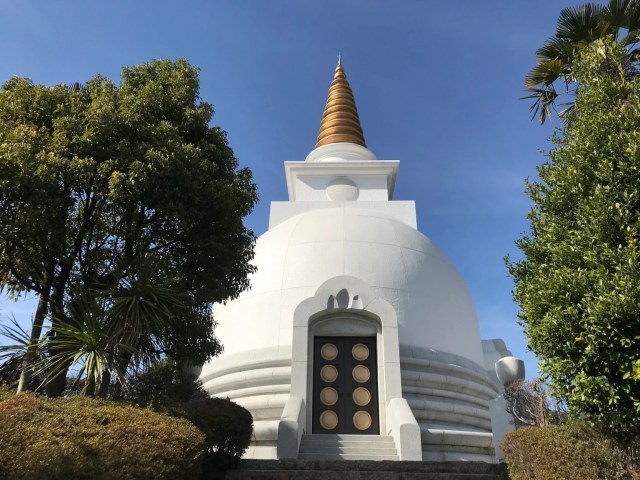
It’s forbidden to take photos inside the pagoda, but Mariko spotted what looked like two golden bells inside the temple, which contained the holy relics.
The Sacred Forest is home to a whole bunch of other things to see as well, such as this statue of Myoken Bosatsu, also known as the God of the North Star. The statue was created in 1301 by the order of a Buddhist priest and was designated as an Important Cultural Property in 1950.
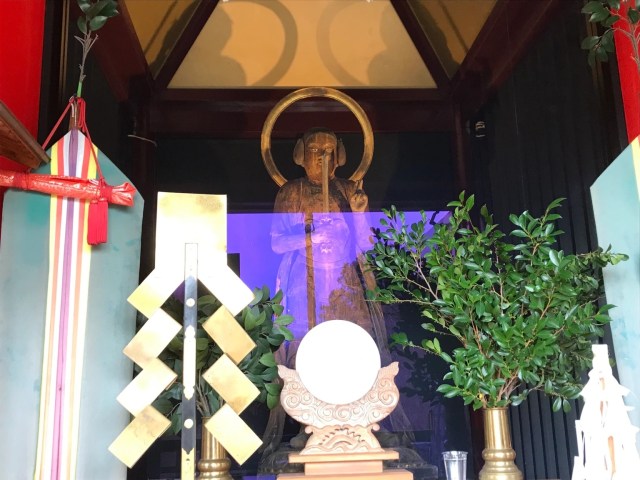
Myokan Bosatsu is said to bring blessings for maritime safety, marriage, safe childbirth, prosperous business, and good fortune. He’s also believed to be the Guardian of Horses, and in ancient times samurai prayed to him to provide them with good horses for battle.
▼ While it looks like the statue is doing a peace sign, it’s actually a sign meaning ‘sword’.

As well as the white pagoda, Hana Biyori’s Sacred Forest is also home to a red pagoda. The red pagoda is believed to have been built in the 17th century, and was moved near to Yomiuri Land in 1964.
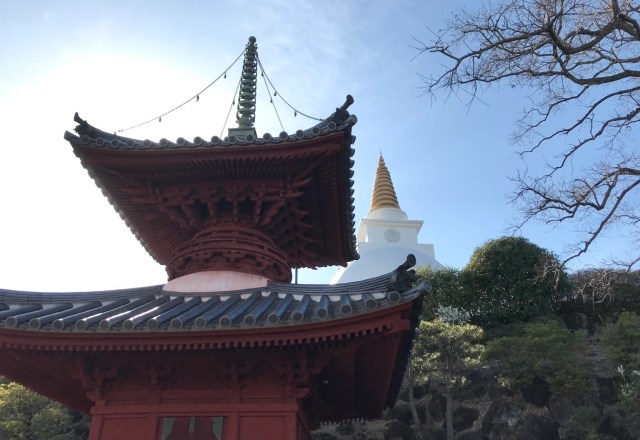
But close to the red pagoda is another remarkable sight — the Statues of the Eight Patriarchs, eight figures believed to be founders of major Buddhist sects.

The statues were created by Sri Lankan sculptor Soma Pala, with former members of the Sculpture Department of the Japan Art Institute and feature Saicho of the Tendai sect, Kukai of the Shingon sect, Honen of the Jodo sect, Shinran of the Jodo Shin sect, Eisai of the Rinzai sect, Dogen of the Soto sect, Nichiren of the Nichiren sect, and Ryonin of the Yutsu Nembutsu sect. Mariko had read about these men in history books, and it was a real treat to see all eight of them here in one place.
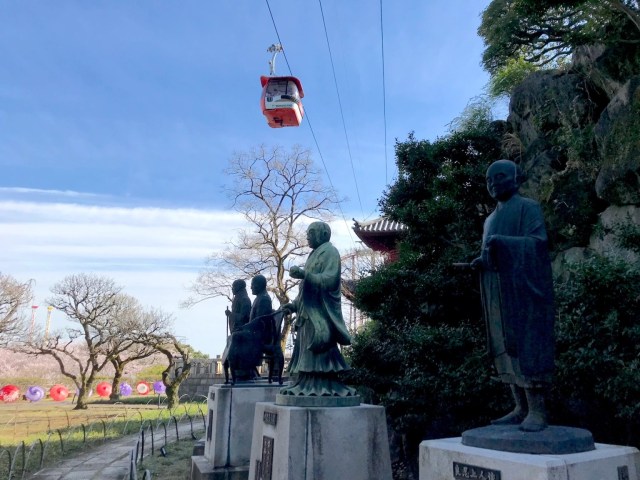
Mariko couldn’t believe such a sacred place existed, and so close to a huge amusement park like Yomiuri Land. The vivid contrast between the red, Japanese style pagoda with the white bell shaped pagoda was so striking, Mariko felt like she was in a different time period, or even a different country. Not only that, but just a stone’s throw away, you can see rollercoasters and Ferris wheels from Yomiuri Land, and sometimes you can even hear cheering and screaming from the people riding them. It’s a surreal combination that feels like it’s from a comic book.
But why is there such a sacred area so close to Yomiuri Land? Well, the answer to that lies in the founder of Yomiuri Land, Matsutaro Shoriki. Shoriki, in addition to founding the Yomiuri Shinbun national newspaper, the Yomiuri Giants baseball team, and Nippon TV network, was a man of strong Buddhist faith, and as such created the Sacred Forest with Buddhist facilities when Yomiuri Land opened.
While Hana Biyori is technically part of Yomiuri Land, if you’re interested in visiting the Sacred Forest, you only need to purchase a ticket for Hana Biyori. Tickets are 1200 yen (US$9) for adults, but you can get a 200 yen discount if you order a ticket online.
Images: ©SoraNews24
● Want to hear about SoraNews24’s latest articles as soon as they’re published? Follow us on Facebook and Twitter!
Credit:

0 comments:
Post a Comment